As Will and Kate Leave the Caribbean, Acknowledging the Horrors of Slavery and Responding to Out-of-Touch Criticisms Can’t Calm Anti-Monarchist Headwinds

Catherine, Duchess of Cambridge and Prince William, Duke of Cambridge during the departure ceremony at Lynden Pindling International Airport on March 26, 2022 in Nassau, Bahamas, at the end of their eight day tour. Photo: Chandan Khanna/AFP via Getty Images
William and Kate’s eight-day tour of the Caribbean wrapped up on Saturday. In the end, it has been a two-headed coin, rather like modern life come to think of it. On the one side, there were crowds of adoring fans waving flags and oohing and ahhing the Duchess’s carefully chosen wardrobe and the Duke’s many-braided uniforms and visits to highlight important works that fit into the royal couple’s philanthropic focuses. On the other has been waves of protest expressing republican sentiment in the three Commonwealth realms they toured, along with calls for apology and reparations for the British role in the hundreds of years of damage from slave trade in the region.
That there was strong anti-colonial sentiment now should not have been a surprise. Barbados just renounced the Queen as its head of state (remaining a Commonwealth member state) last November. Prior to that, it had been some time since a realm left the fold (with Guyana leaving in 1970, Trinidad and Tobago in 1976, and Dominica in 1978; all three remained in the Commonwealth). The experience of the 2019 Black Lives Matter movement across the world has given new life to calls for examining colonial ties, especially with Britain, where the Windrush scandal involving subjects of Caribbean descent has roiled the British government.
It is a critical moment in the Commonwealth: the Queen is 95 and the ostensible reason for the tour — her Platinum Jubilee — is a moment of both taking stock and setting up for the future. After losing her husband a year ago, and suffering a series of health setbacks, the monarch is in the process of setting up succession. As far back as 2018, she expressed a desire for Charles to take over as head of the Commonwealth on his future ascension to the throne, and the member nations granted that request by vote.
Thus, William and Kate were sent off to shore up support. The waves of protest — which whipped up into a storm of headlines — may serve to help season the young couple. After all, that is what the monarchy does, right? It keeps calm and carries on.
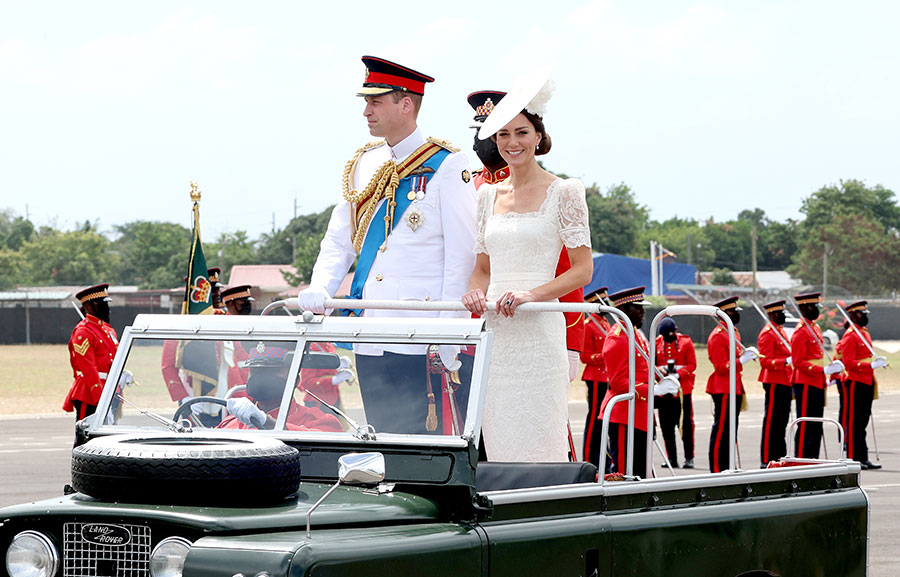
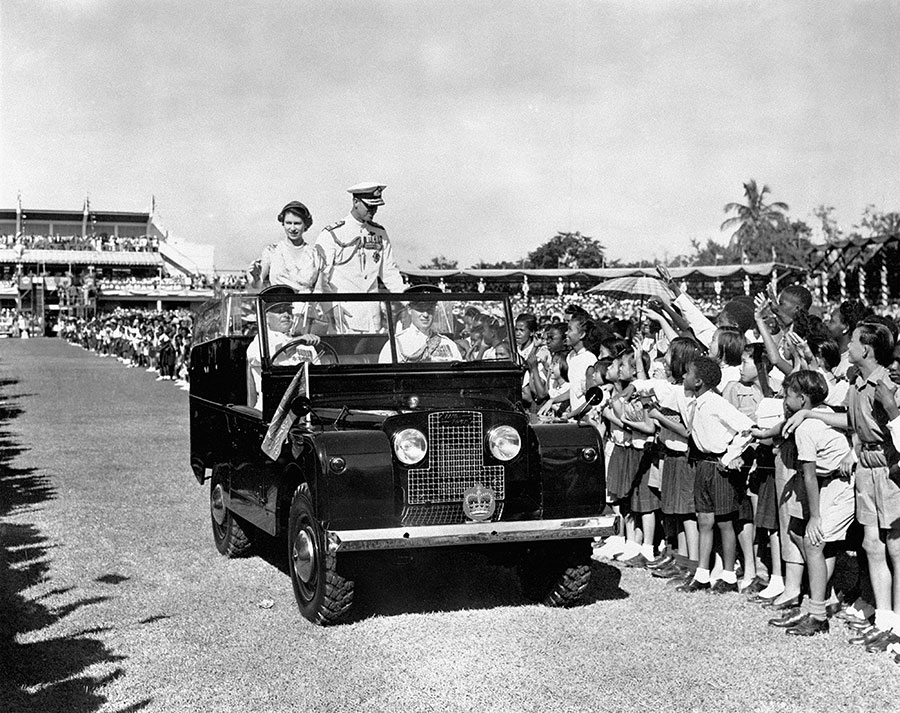
Except, the urgency for change now makes the very fact they were sent seem not just a folly but a major misstep, a score on their own goal. Hot on the heels of Harry and Meghan’s claims of racism in the Royal Family came William’s foot-in-mouth moment last week where he said that war in Europe was “very alien.” And this whole dress-up set-piece bouncing from photo op to photo op is bad theatre that now seems anachronistic at best, and misguided at worst. The tour was about optics, and the optics turned out to be just plain terrible.
The headwinds the Cambridges face added up swiftly, from the first item of the first day of the tour in Belize, rescheduled due to protests by Q’uechi Mayan villagers to the Prime Minister of Jamaica announcing ahead of their arrival the intention to begin the process of removing the Queen as head of state to coincide with 60th anniversary of independence celebrations on the island this summer. He then said it to the couple themselves — an unusually frank approach given the customs of apolitical royal protocol. There was also a dust-up (in the press) involving a beauty queen turned politician named Lisa Hanna, who was thought to have snubbed Kate (she explained she did not do so, in a letter to the Guardian, but used the opportunity to call for reparations). Signs in Jamaica read “Seh Yuh Sorry,” which swiftly became a hashtag. And waiting in Bahamas, warmed up by the salvos from Belize and Jamaica, was a protest by Rastafarian groups and the Bahamas National Reparations Committee, which presented an open letter for the Royal Family (and their government) to “acknowledge that their diverse economy was built on the backs of our ancestors.”
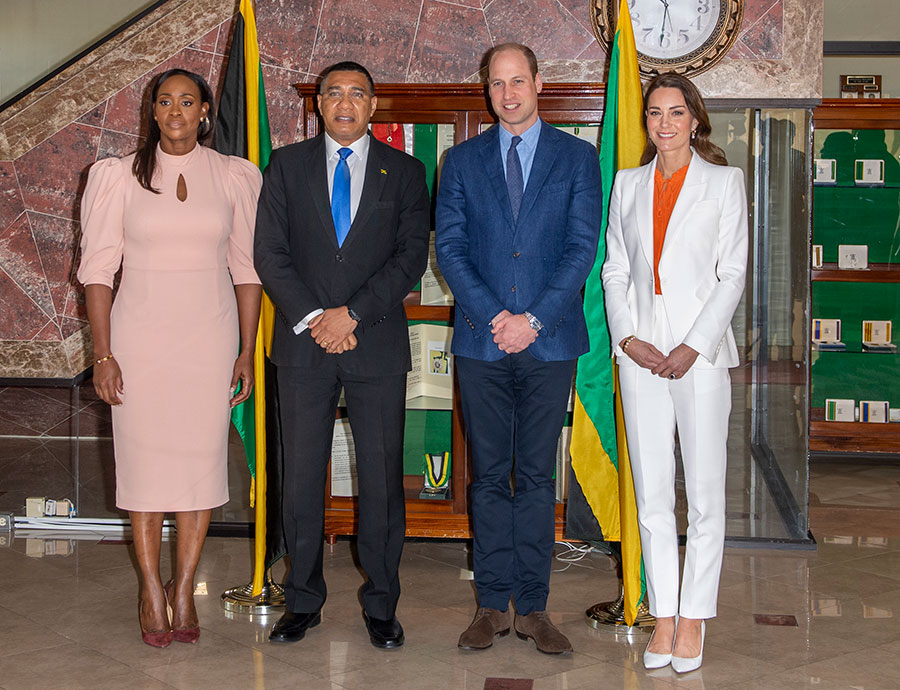
This is not the first existential threat the family has faced. The Queen’s father, George VII, oversaw the dissolution of the British Empire and the partition of India. The formation of the Commonwealth in 1953 took place under the Queen’s watch. The 60s and 70s saw a first period of republicanism foment among Commonwealth countries, and the 80s included Canada’s own repatriation of our constitution and unpopularity for the monarchy in Australia.
Perhaps it is better to look at William and Kate’s trip as part of an ongoing story. It is also important to note that the British Royal Family is only one of the decision-makers in where they go on tour: the British government and the countries visited all have a say in green lighting a tour and its itinerary.
Charles acknowledged “the atrocity of slavery” saying “it forever stains our history” at the ceremony marking Barbados becoming a republic.
In Jamaica, William echoed his father’s words, expressing “profound sorrow” and saying that “slavery was abhorrent and never should have happened.” William, like Charles, was criticized for not going a step further and apologizing for slavery. Yes, it is probably too little, too late.
But neither William or his father have the authority to apologize on behalf of the British government, nor do they have authority to make reparations happen. Their scripted words were very carefully chosen, a practice best exemplified by the Queen herself, who has walked an apolitical line now for 70 years.
Neither statement — no matter how constrained father and son were by protocol — was enough to meet this moment. The Royal Family has always explicitly favoured self-determination in Commonwealth realms and nations, but that may no longer be enough. But the remarks William went on to make in the Bahamas are a sign of acceptance of how things will unfold, if not unravel.
The history of the Royal Family and slavery goes back to the 15th century and the reign of Elizabeth I, who sent one of her ships to the West Coast of Africa with direction to capture slaves; subsequent generations of royals engaged in the slave trade.
The monarchy feels like it is moving slowly — like turning around an oceanliner — but in fact it has under the Queen’s purview responded to, and been changed by, public opinion. The Queen voluntarily began to pay taxes, she decommissioned the royal yacht Britannia, scaled down use of the royal trains and opened castle doors to the public. Charles is said to be ready to do more on that front, along with his desire to drastically slim down the count of working members of the family paid by public purse. But the pace of change today has left the monarchy playing catchup. This tour may mark the beginning of the end for the House of Windsor if something rash isn’t done. This is also a worrying dent in brand Cambridge. William and Kate and their young family are seen as the future of the charm offensive that has worked so well for the monarchy thus far, but this outing begs question as to how far this will take the family in the future.
A Closer Look at the Royal Tour
So let’s look at the tour in more detail. First of all — and this was happening simultaneously to the protest stories — Kate’s wardrobe was spectacular. Her evening wear in particular was jaw dropping, and much more sophisticated and runway edgy than the Duchess has ever before pulled off. (This despite the fact she was likely rather overdressed for a reception in the Belizean jungle, but damn the pink shiny Vampire’s Wife dress, a celebrity favourite label by London designer Susie Cave, wife of rocker Nick Cave, was really good.) Similarly, the green off-shoulder Jenny Packham tulle gown she wore to a formal reception in Jamaica (this time the men also wore black tie) was a brilliant backdrop to the emerald earrings and bracelet, lent to her from the Queen.
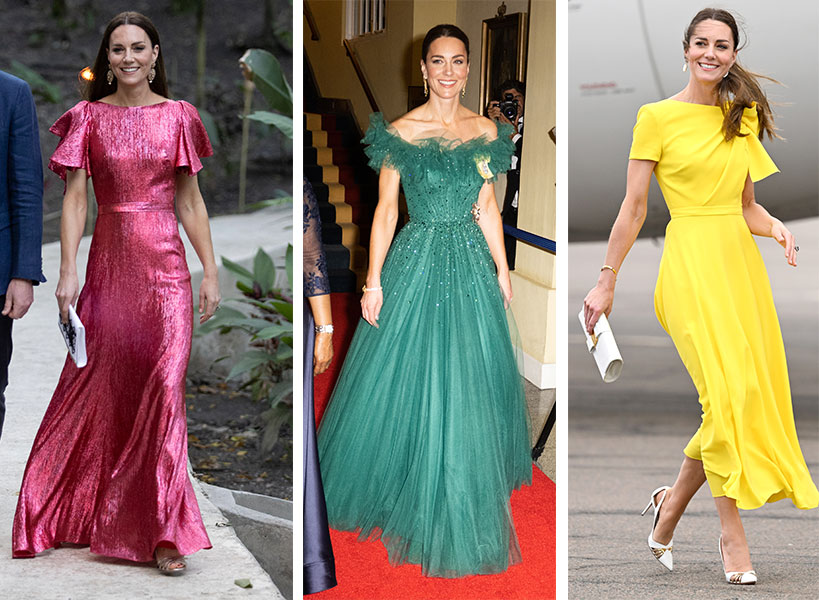
Other standout outfits included a smashing yellow Roksanda Ilincic dress worn on the tarmac in Kingston (where she was supposedly though apparently not ignored by Ms. Hanna). And the last day in Jamaica she was an absolute vision in an Alexander McQueen lace dress that was a direct reference to one the Queen wore at a garden party on her own first Commonwealth tour circa 1953.
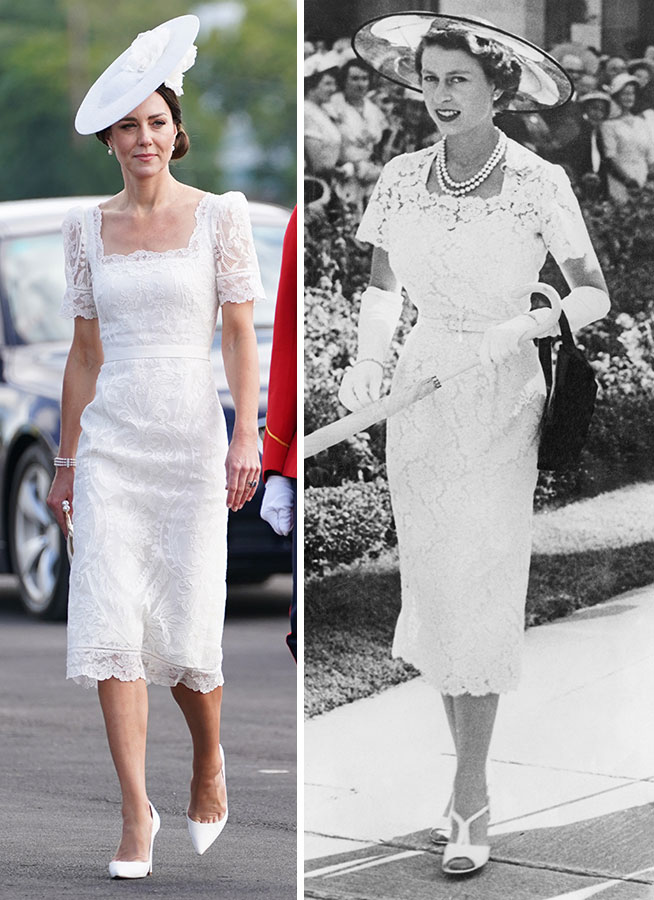
Kate stayed close to the colours of the flags of the nations she was visiting, and even busted a few cute casual looks for sportier appearances (including a slim-fit khakis and white t-shirt look in Belize that the press dubbed her Lara Croft Tomb Raider getup).
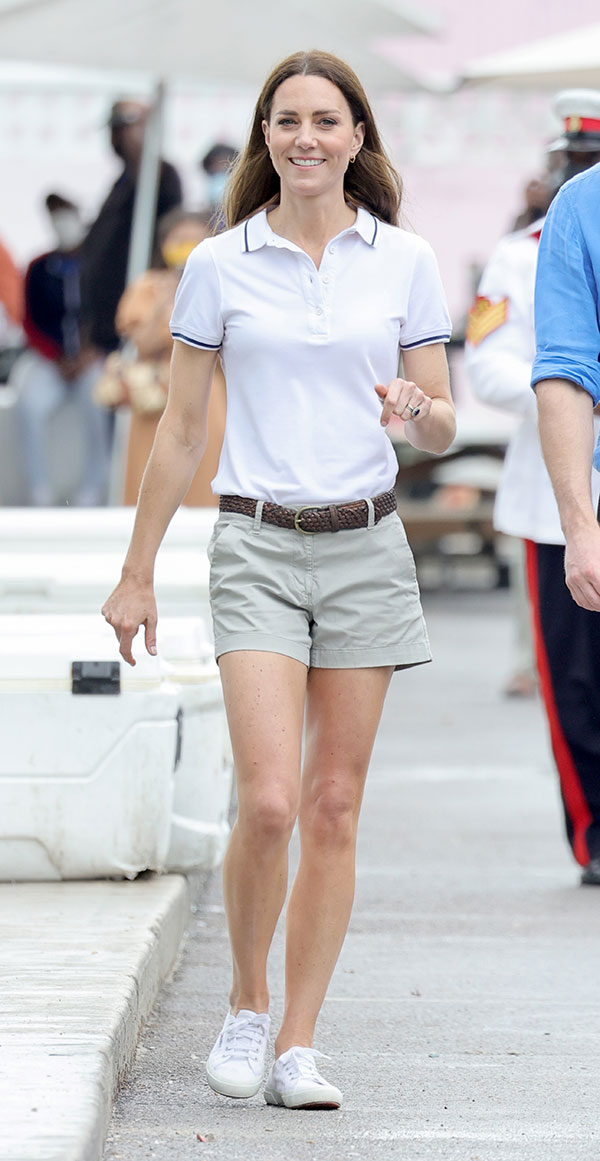
How the dust settles on this tour will be closely watched (as will Edward and Sophie’s and Princess Anne’s upcoming Platinum Jubilee Commonwealth tours). The royals know that photographs stay around a lot longer than headlines, and this tour will indeed provide many memorable slideshows of Kate’s outfits as the pair engaged in activities both educational (hospitals, schools, environmental sites) and goofy (drumming in Trench Town, home of Bob Marley, was likely not a good choice, as dressed-up royals doing cliched things in less affluent environs just isn’t good optics; you’d think they would have learned that when they were carried aloft on thrones by Soloman Island villagers in 2012).
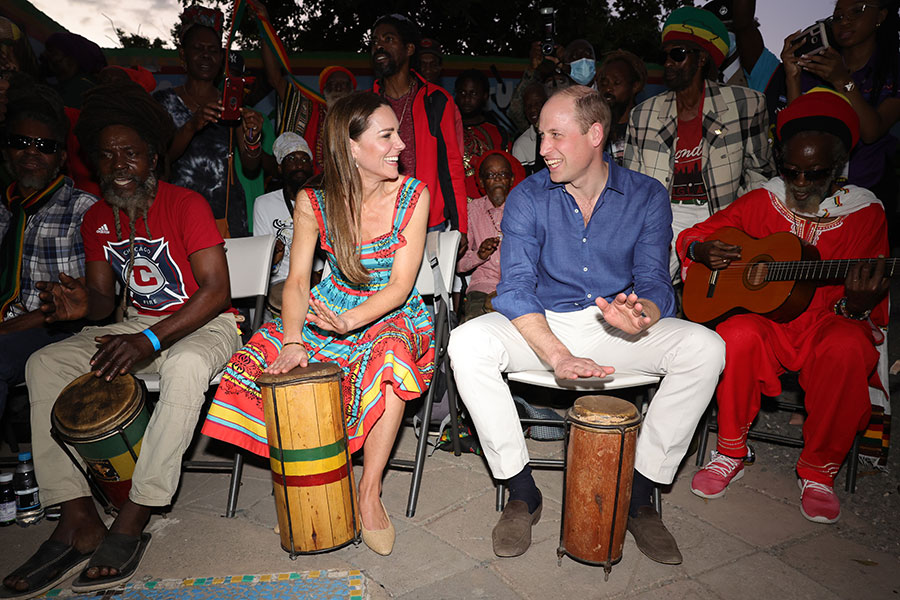
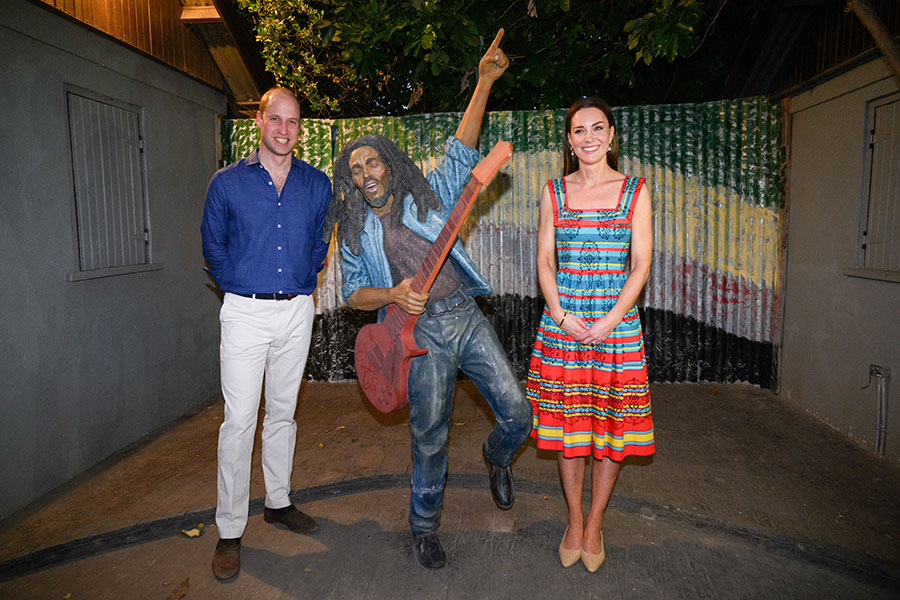
Another photo that will live on is less overtly racist than it looks: the couple was pilloried for greeting fans through a fence on a football pitch in Jamaica. Now, there are pitches like these throughout the Caribbean; their intent is practical in that they keep fans off the field. But close ups of William and Catherine, her in a darling vintage striped dress from a shop in London, look pretty damn bad as they reach through a sea of black arms on the other side of chain links. The context doesn’t matter, though, when the symbolism is that powerful.
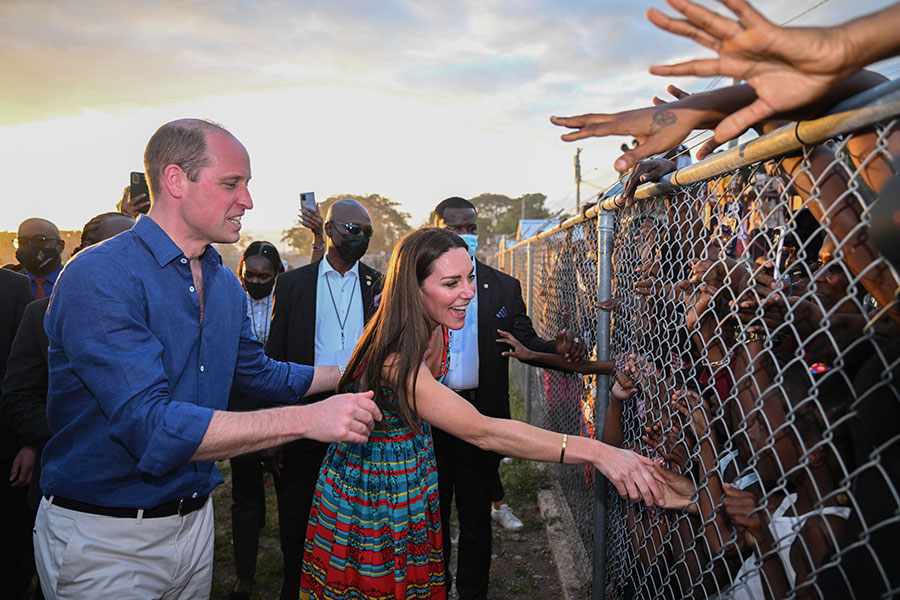
Negotiating this next stage of progress for the Royal Family is going to take deft hands. In an unprecedented move, as they left the Bahamas, the Cambridges posted a statement reacting to the criticism, in which William hinted that the Commonwealth may not be led by the monarchy when it is his time to reign.
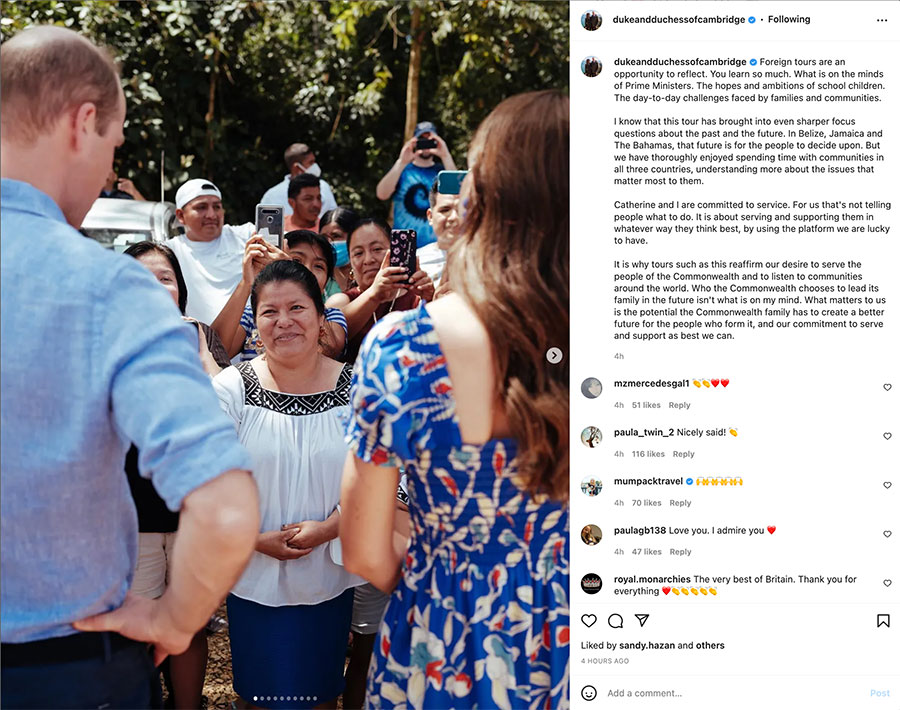
This tour, after basically 11 years of non-stop adulation from crowds the world over, will serve as good training for William and Catherine, who will be King and Queen consort, in the fulness of time. They will need to develop both tougher skin and a deep understanding of the responsibilities their enormous privilege brings.
RELATED: